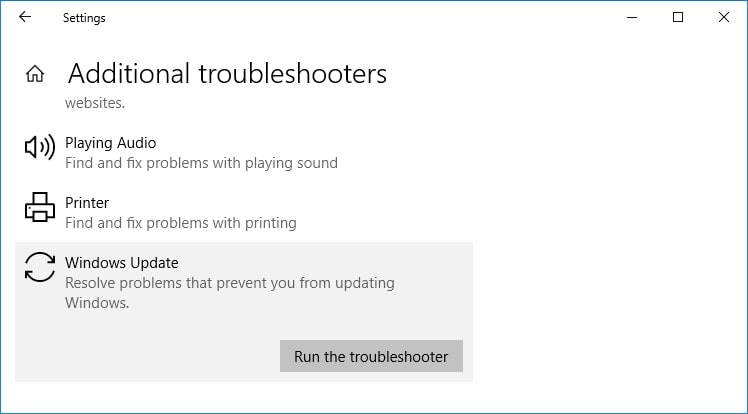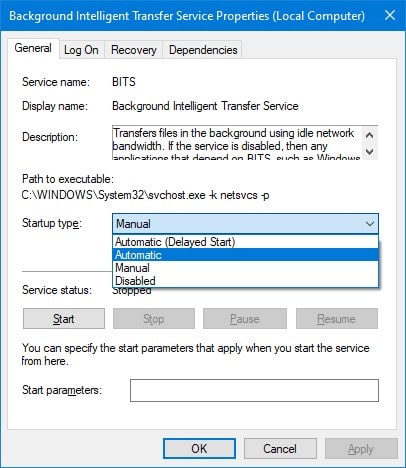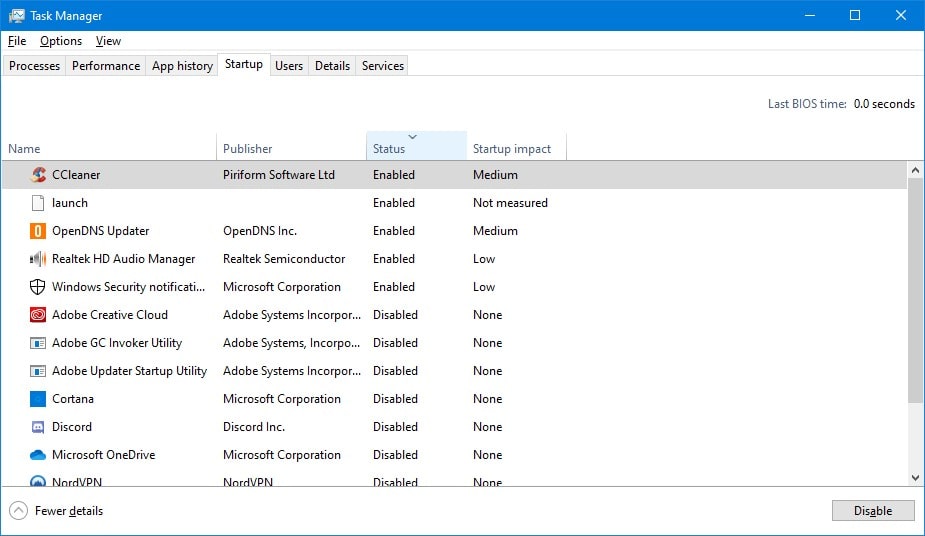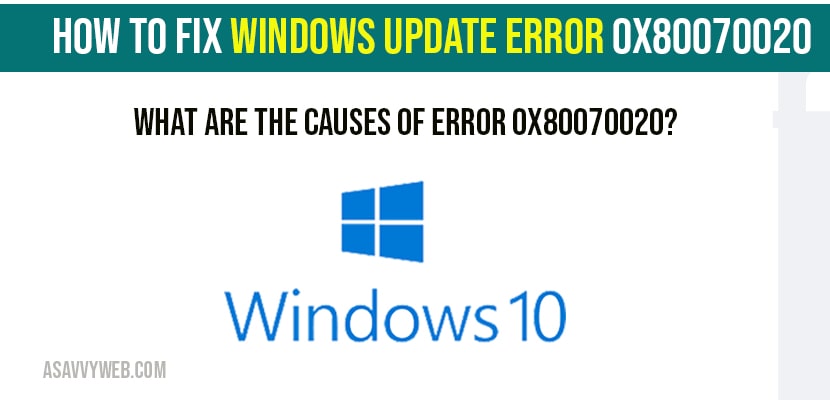As someone who always likes to keep their system up to date, it can be frustrating to encounter bugs or glitches that keep you from doing so. Many people have reported the error code 0x80070020 while installing Windows Updates and if you are one of them, keep reading as we’ll be showing you exactly how to fix this error.
Similar to other Windows errors like 0xc19001e1, 80072f8f, 0x8e5e03fa and 0x80070424, the download error – 0x80070020 also occurs while updating & installing Windows, and is usually caused by a program that’s interfering with the Automatic Update Process. Fortunately, there are some straightforward and effective methods that you can follow to get rid of the error 0x80070020. Let us assist you in this easy-to-follow guide.
What are the causes of Error 0x80070020?
The Windows 10 upgrade error 0x80070020 can occur when installing the downloaded Windows Updates. Sometimes, it can also occur when you are upgrading to Windows 10 from an older version. It’s important to know what’s causing the error, and the most probable causes are one of the following:
- Your antivirus software is using real-time scanning and interfering with the Windows 10 Updates.
- Corrupted Background Intelligent Transfer Service (BITS), which is responsible for delivering Windows Updates on your system
- Missing system files or disk errors
Now that you know what might be one of the factors responsible for the error code 0x80070020, it’s time to resolve the issue by following the methods below.
How to Fix error code 0x80070020
It’s best to eliminate these errors as soon as you encounter them, since letting them hang in there for too long can result in slower performance or other avoidable issues. Make sure you follow the steps correctly, and it’s also a good idea to back up your important data before proceeding.
1. Disable Your Antivirus Software Temporarily
As mentioned above, one of the most common causes of the 0x80070020 error is when a third-party antivirus software like Norton, McAfee or Kaspersky is affecting Windows Updates. To ensure that this is not the case, you need to disable it temporarily, and then try installing the Updates to see if it works.
To disable your Antivirus software, all you have to do is locate the antivirus icon on the taskbar (if you can’t find it on the taskbar, click on the arrow near the notifications area). Then right click on the icon and select disable option. After you’ve done that retry Windows Update to see if the error code 0x80070020 still persists.
If disabling the antivirus works, we suggest that you switch to a different antivirus software or reinstall the same. Note that antivirus can help protect your PC against viruses and threats, so if you have to temporarily disable it for some reason, you should enable it back as soon as you’re finished.
2. Run the Update Troubleshooter on the computer
Windows 10 has a built-in Update troubleshooter that can help diagnose and resolve problems related to updates. We suggest you run this troubleshooter to check if the issue is with Windows Update in your PC.
Follow these steps to run the Update Troubleshooter:

- Select Start > Settings.
- Select Update & Security in the Settings menu
- Open Troubleshoot > Additional Troubleshooters under the Update & Security window
- Under the Get up and running section, select Windows Update > Run the troubleshooter.
- Once the troubleshooter is finished, Restart your system.
- Check for new updates and see if it resolves the problem.
3. Reset the Windows Update Components
Resetting the Windows Update Components will configure registry keys and Windows Update services to their default settings. Please note that this might be risky if you don’t know what you’re doing, and we recommend creating a System Restore Point to avoid serious problems if anything goes wrong.
Carefully follow these instructions on how to rest Windows Update Components manually.
- Press Windows Key + X, a menu will appear in the bottom right part of your screen. Select Command Prompt (Admin).
- Stop the Windows Update Services, Cryptographic, BITS and the MSI Installer. Type the following commands (one-by-one) in the command prompt and press ENTER after each command.
- Now rename SoftwareDistribution and Catroot2 folders to <folder name>.old respectively. Type the following commands in the command prompt and press ENTER after each command.
net stop wuauserv
net stop cryptSvc
net stop bits
net stop msiserver- Now rename SoftwareDistribution and Catroot2 folders to <folder name>.old respectively. Type the following commands in the command prompt and press ENTER after each command.
ren C:\Windows\SoftwareDistribution SoftwareDistribution.old
ren C:\Windows\System32\catroot2 Catroot2.old- Now restart the Windows Update Services, Cryptographic, BITS and the MSI Installer. Type the following commands in the command prompt and press ENTER after each command.
net start wuauserv
net start cryptSvc
net start bits
net start msiserver- Close the Command Prompt and then restart your system. Now retry installing the Updates.
4. Restart Background Intelligent Transfer Service (BITS)
Background Intelligent Transfer Service (BITS) is one of the Windows Updates Components. If it is corrupted your system will have trouble fetching Updates from the servers, which might cause Windows 10 upgrade error 0x80070020. Simply restart BITS by following these steps:
- Open the Run box (Windows Key + R). Type services.msc and press ENTER or OK.
- Find Background Intelligent Transfer Service from the list. Right-click on it and select Properties
- Under the General tab, change the Startup type to Automatic.

- Now check the Service status: if it shows ‘Stopped’, click Start. If it shows ‘Running’,
- Click Stop and then Start again to restart the service.
Click Apply or OK and retry updating Windows.
5. Perform a Clean Boot and Install the Windows Update
A Clean Boot refers to when you start Windows with a limited set of programs and drivers, so that you can determine if there is any background program that’s causing any problem. As this keeps third-party software and antivirus from automatically starting when you boot up, you are able to pinpoint the cause of the error.
To perform a clean boot, use the following steps:
- Open the Run box (Windows Key + R). Type msconfig and press ENTER or OK.
- On the Services tab of System Configuration window, select the checkbox that says Hide all Microsoft services and select Disable all.
- Now go to the Startup tab of System Configuration window, click on Open Task Manager.
- Under the Startup tab of Task Manager, find all the items that show Status as ‘Enabled’, select each item one-by-one and select Disable. After disabling all startup items, close Task Manager.

- On the Startup tab of System Configuration window, click OK.
- Restart the system and try to update Windows again. If the error doesn’t occur, you’ll know one of those programs is causing the problem.
Conclusion
We just showed you the most effective ways to fix the download error – 0x80070020. Hopefully you’ve succeeded in updating your Windows PC normally after performing the methods listed above. If you have any other solution to the error 0x80070020 or are stuck in any of the steps we discussed, feel free to reach out to us in the comments section below.

